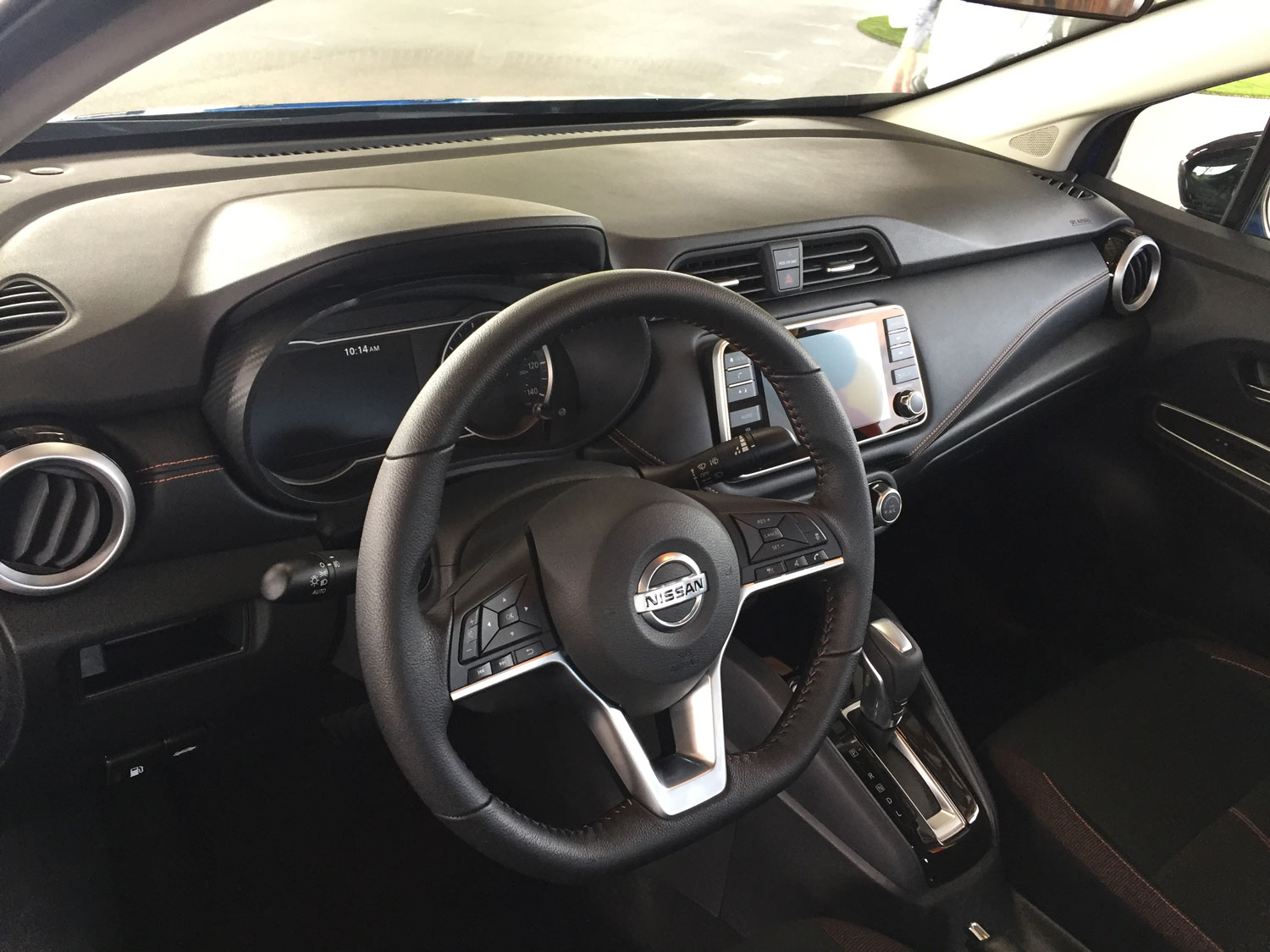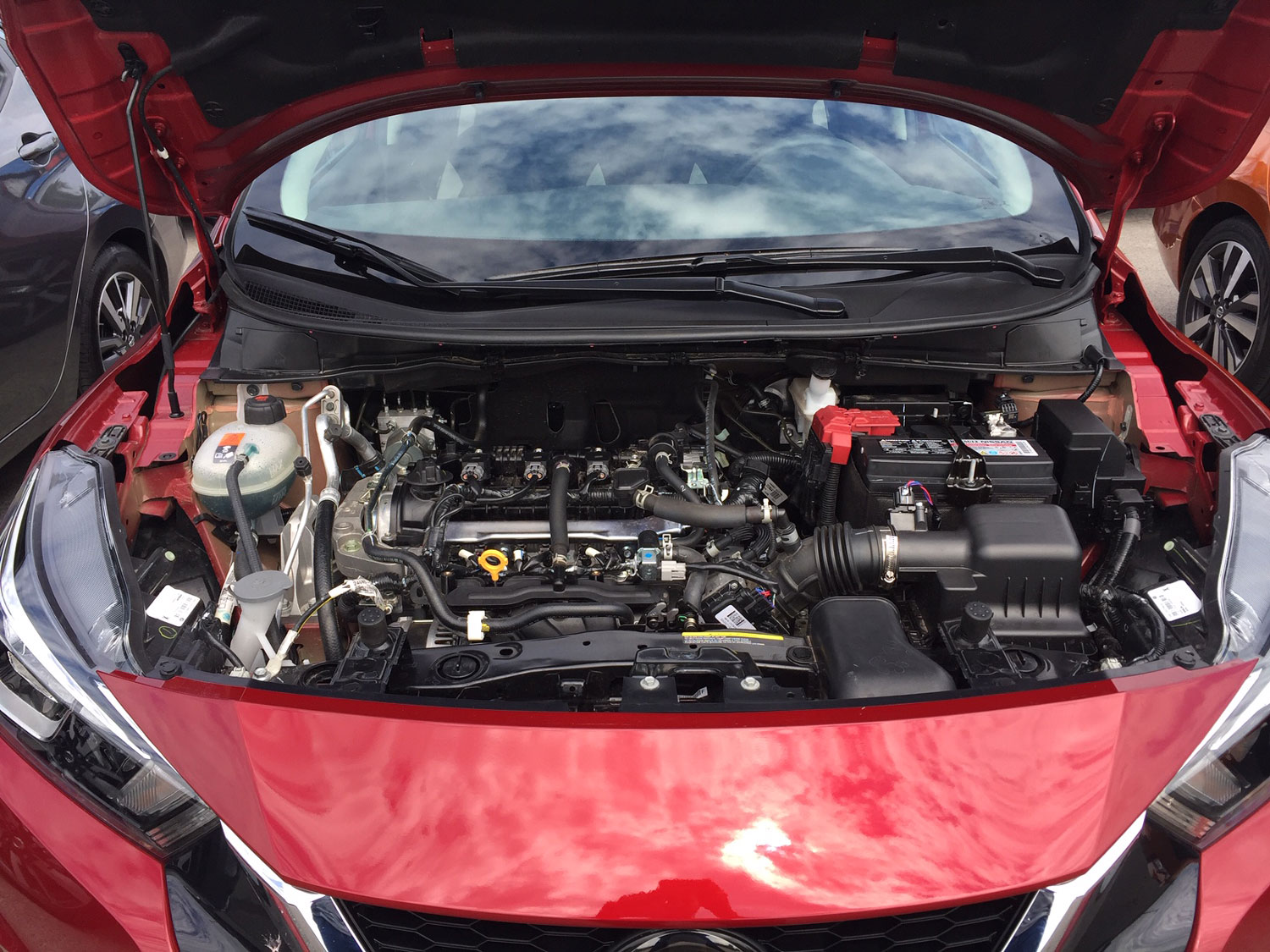The 2020 Nissan Versa packs a lot more than a big trunk
Subcompact crossovers are all the rage right now, which leaves the traditional subcompact market in a bit of a jam. Nissan is betting big on the success of the Kicks, but unlike Ford (which killed the Fiesta for North America entirely, in favor of the EcoSport) the Japanese automaker is renewing its commitment to the humble subcompact space. Even better, the new 2020 Nissan Versa does not sacrifice the prior generation’s approachability and surprising cargo capacity. There’s even a generous smattering of available tech.
Nissan is starting this new chapter for the Versa with a sedan, but we wouldn’t be surprised if the Versa hatchback never comes to the U.S. at all, as Nissan is looking to move those customers into the driver’s seat of a Kicks. That means the Versa faces off against competitors such as the Toyota Yaris and Hyundai Accent, both of which have been gaining traction with fresh styling and more standard features. The 2020 Versa gets a gentle re-molding of the sheet metal, but Nissan focused on what you first see and most often interact with in a daily driver. Fit and finish is neat and consistent and the Versa comes packed with what Nissan claims is the most standard tech in the class.
While the Hyundai Accent photographs well, the Accent offers buyers fewer chances to complain or analyze interior panel fit because Hyundai’s build process uses relatively few panels and disguises lackluster panel gaps. I found the finish around the Versa’s vents as good as I would expect in a car costing around twice as much. Think BMW-of-10-or-15-years-ago good.

The dash has a low-gloss appearance with thoughtful surface breaks and material transitions. Even the main leather accent running across from the driver’s side to the passenger side felt like real stitched leather instead of the typical matte vinyl that fellow “entry level” cars are known for. (Worse, in many cases—a printed and molded piece meant to trick the owner.)
Soft-touch surfaces were excellently executed with a more convincingly premium use of metal accents. I wasn’t actually 100 percent sure if the metal was real; that’s how impressive the pre-production detail and brightwork was.
From first-instrument-cluster dash, you can see the tech Nissan is so proud of. Pushing the button to start, the seven-inch screen in the gauge cluster, flanking the traditional speedometer, lit up revealing numerous menus and options.

Plus the other seven-inch infotainment screen, which features Apple CarPlay and Android Auto, all 2020 Versas get automatic braking, pedestrian detection, lane departure warning, high beam assist, and rear automatic braking. Our SV (and the SR) also had adaptive cruise control. Conventional mpg meters and other fuel and run time data is available by flipping through the menus. In execution and functionality, it’s very similar to the $24,100-base-price 2020 Altima.
Pulling out of the parking lot, the first thing I noticed was the steering. It’s very light under 15 mph, but firms up at speed. While still electronically assisted like the last generation, there is more feel than before. There also was a great deal less wandering at speed compared to any small Nissan in recent memory. The new Xtronic continuously variable transmission with revised planetary gear set and steptronic tuning made the Versa felt a great deal more peppy on pedal tip-in compared to previous generations, even though power increases are small: horsepower creeps up 12 percent to 122, and torque gets a 7-percent nudge to 114 lb-ft.
Nissan claimed it spent time making the car more highway-friendly even in crosswinds, and it showed. We turned onto the expressway and promptly were caught in the dirty air of a passing semi. I set the adaptive cruise on the middle setting and let the car take over. As the semi slowed for a wide, uphill corner, the car slowed with it.

Without missing a beat, the car returned to 65 mph as the truck changed lanes. No bucking, no noise, and no drama. Fellow sedan cut us off? No problem. The car slowed slightly and returned to speed once the car moved lanes again.
I could barely hear that the car was doing anything. Noise seemed to be well taken care of and my co-driver and I were able to have a conversation without speaking much louder than a whisper. Is this what entry-level cars are going to be in 2020? Quiet? I hope so.
We turned off the expressway along a winding two-lane highway. The asphalt was not perfect, but the suspension soaked up the potholes well. Previous Versas had a tendency to porpoise slightly, due to the stiffer rear springs and short wheelbase. They were manageable, but not very fun. For someone acclimated to a Hyundai Accent or an older Ford Fiesta, the new Versa still seems soft by comparison, but even as we loaded the car up driving through the tighter, somewhat quick turns, everything stayed composed. The car felt safe.
When it comes to space, the 2020 Versa prioritizes the driver and cargo capacity. I’m six-foot-two, and I greatly appreciated the 44.5 inches of front legroom, which is noticeable compared to others in the segment. In the back row, there were tighter quarters than the previous Versa sedan—but no worse than the Yaris or Accent I’d been in before.
In many ways, it’s a trade off. Do you want more rear seat headroom or do you want a more attractive, less frumpy sedan?
The 2020 Versa sedan does retain two of the most attractive elements of the outgoing car: plenty of cargo space and the ability to open the doors almost 90 degrees. One of the stops on our route featured a car with the rear trunk stuffed with bags and a camping chair and a cat/dog crate. It’s clear that they focused on enlarging the opening to fit larger items compared to the previous model.

While still using gooseneck hinges, Versa’s trunk uses components positioned much further to each side to to yield more usable space. Anyone with a packed rear trunk full of groceries can tell you how annoying it is to have your bread crushed by a hinge. That said, the cargo hold does work as intended and I could see fitting our large stroller plus a diaper and overnight bag in the back. Nearly 15 cubic feet is pretty impressive for a car in this class that isn’t a hatch. (For comparison, the 2019 Toyota Camry maxes out at 15.1 cubic feet and the Nissan’s 2020 Altima has 15.4 cubic feet.)
The middle-of-the-road SV trim will probably be the best seller among the 2020 Versa range. I got the SR trim on my 2015 Note because my wife loved the high-end effect of the orange trim on the seats, but the 2020 mid-level SV packs so many standard features it will be easy to get exactly the features you want. (In fact, base trim of the 2020 Versa sedan has more options than the highest trim level on the 2015 Note.)
“Expensive” is a pretty relative term in a world where the average transaction price is well over $30,000 and car loans regularly average 72 months. The Versa SV we drove was a shocking $18,930 (delivery and paint upcharge included). That’s a very palatable purchase price for a great many Americans.
The real question is, do people really want an entry-level sedan, even at that price? Americans’ migration to crossovers isn’t slowing down, but there’s no doubt that you can still get a solid, comfortable, spacious, and well-equipped new sedan for under $20,000. And in that department, the new Versa is as relevant and competitive as ever.




